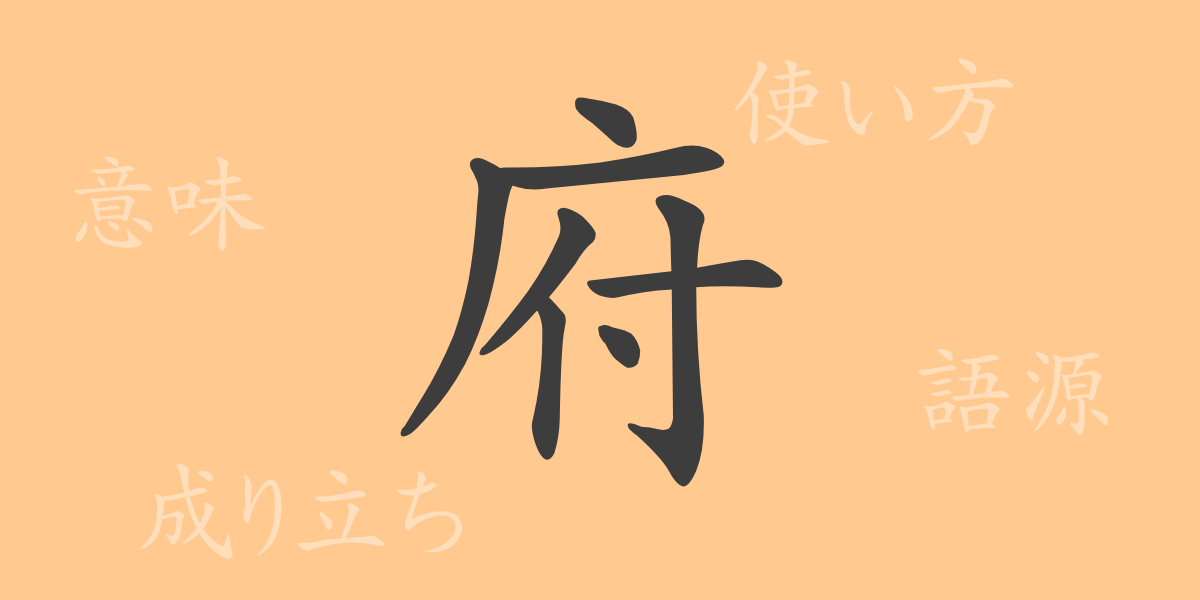Japan’s written culture is profound, with 常用漢字 (Jouyou Kanji, commonly used kanji) being an indispensable part of daily life for Japanese people. In this article, we focus on one such 常用漢字 (Jouyou Kanji), “府” (Fu), delving into its history, meaning, and usage. Through this article, we embark on a journey to understand the multifaceted nature of “府” (Fu) and rediscover the charm of kanji.
府の成り立ち(語源) (Origin of “府” (Fu))
The kanji “府” (Fu) has been used to refer to government offices and local administrative divisions in ancient China. The origin of the character combines “广” (guǎng), meaning land, and “付” (fù), meaning to manage, indicating a place that manages land, i.e., an administrative building or institution related to “府” (Fu). Over time, its meaning expanded and developed uniquely in Japan as well.
府の意味と用法 (Meaning and Usage of “府” (Fu))
In modern Japan, “府” (Fu) primarily refers to a type of administrative division known as “府県” (Fuken). Specifically, it is used for certain administrative areas such as 大阪府 (Osaka-fu, Osaka Prefecture) and 京都府 (Kyoto-fu, Kyoto Prefecture). Additionally, “府” (Fu) can also denote the highest institution in a particular field or an organization with specific functions.
府の読み方・画数・部首 (Reading, Stroke Count, and Radical of “府” (Fu))
The kanji “府” (Fu) plays a significant role in written Japanese. Understanding its readings and structure is essential.
- Reading: On’yomi (音読み) is “フ” (Fu), no Kun’yomi (訓読み)
- Stroke Count: 8 strokes
- Radical: 广 (まだれ, madare)
府を使った熟語・慣用句・ことわざとその意味 (Idioms, Proverbs, and Phrases Using “府” (Fu))
There are numerous idioms and phrases in Japanese that include “府” (Fu). For example, the idiom “府中” (Fuchuu) means the central area of a prefecture, and “府立” (Furitsu) refers to public facilities such as schools or hospitals established by the prefecture. These idioms and phrases illustrate the depth of the Japanese language.
府についてのまとめ (Summary of “府” (Fu))
Through this article, we have overviewed the historical background and modern usage of the kanji “府” (Fu). In Japan, it is particularly established as a term for local administrative divisions, with extensive applications. Additionally, knowing its readings, stroke count, and radical can deepen your understanding of the kanji “府” (Fu). Learning the meanings embedded in each kanji character is the first step to appreciating the depth of the language.

























